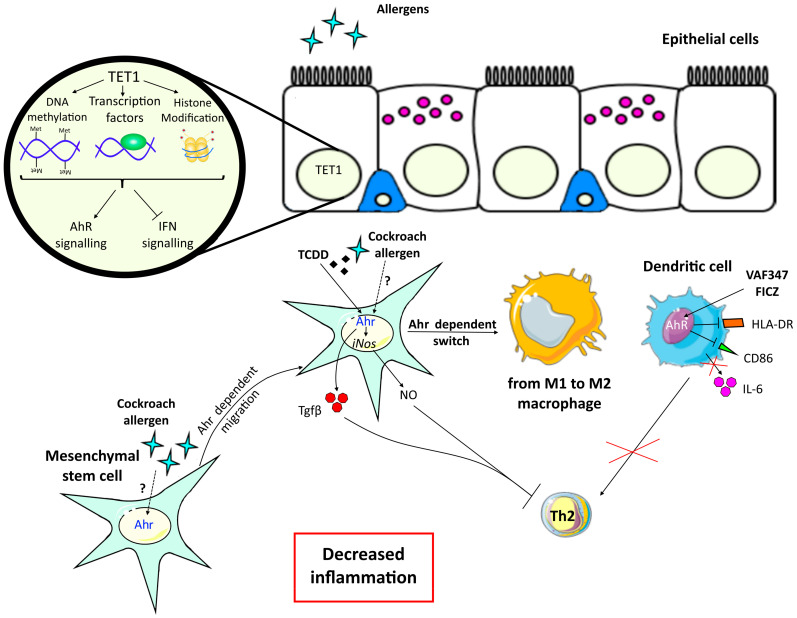Figure 3.
Beneficial effects of aryl hydrocarbon receptor (AhR) activation in asthma. Ten-Eleven Translocation 1 Gene Protein (TET1) is a demethylase that induces epigenetic modification and acts on DNA methylation, transcription factors binding or histone modifications. In epithelial cells, TET1 activation blocks interferon (IFN) signalling and induces AhR signaling, promoting an anti-inflammatory phenotype in asthma models. Mesenchymal stem cells (MSC) express Ahr that can be activated by cockroach allergen leading to their recruitment and migration to the airways. These cells then induce a switch from M1 to M2 anti-inflammatory macrophages. Ahr activation of MSC either by 2,3,7,8-tetrachlorodibenzo-p-dioxin (TCDD) or cockroach allergen upregulates the expression of inducible nitric oxide synthase (iNOS) and secretion of nitric oxide (NO) and Tgf-β leading to the inhibition of the T cell response. Activation of dendritic cells (DC) by AhR agonists formylindolo[3,2-b]carbazole (FICZ) or synthetic [4-(3-chloro-phenyl)-pyrimidin-2-yl]-[4-trifluoromethyl-phenyl]-amine (VAF347) impairs their ability to generate functional Th cells through a reduction of IL-6 secretion and of stimulatory molecules CD86 and HLA-DR expression. Altogether, AhR expression by epithelial cells, MSC and DC have a beneficial effect on asthma features.

